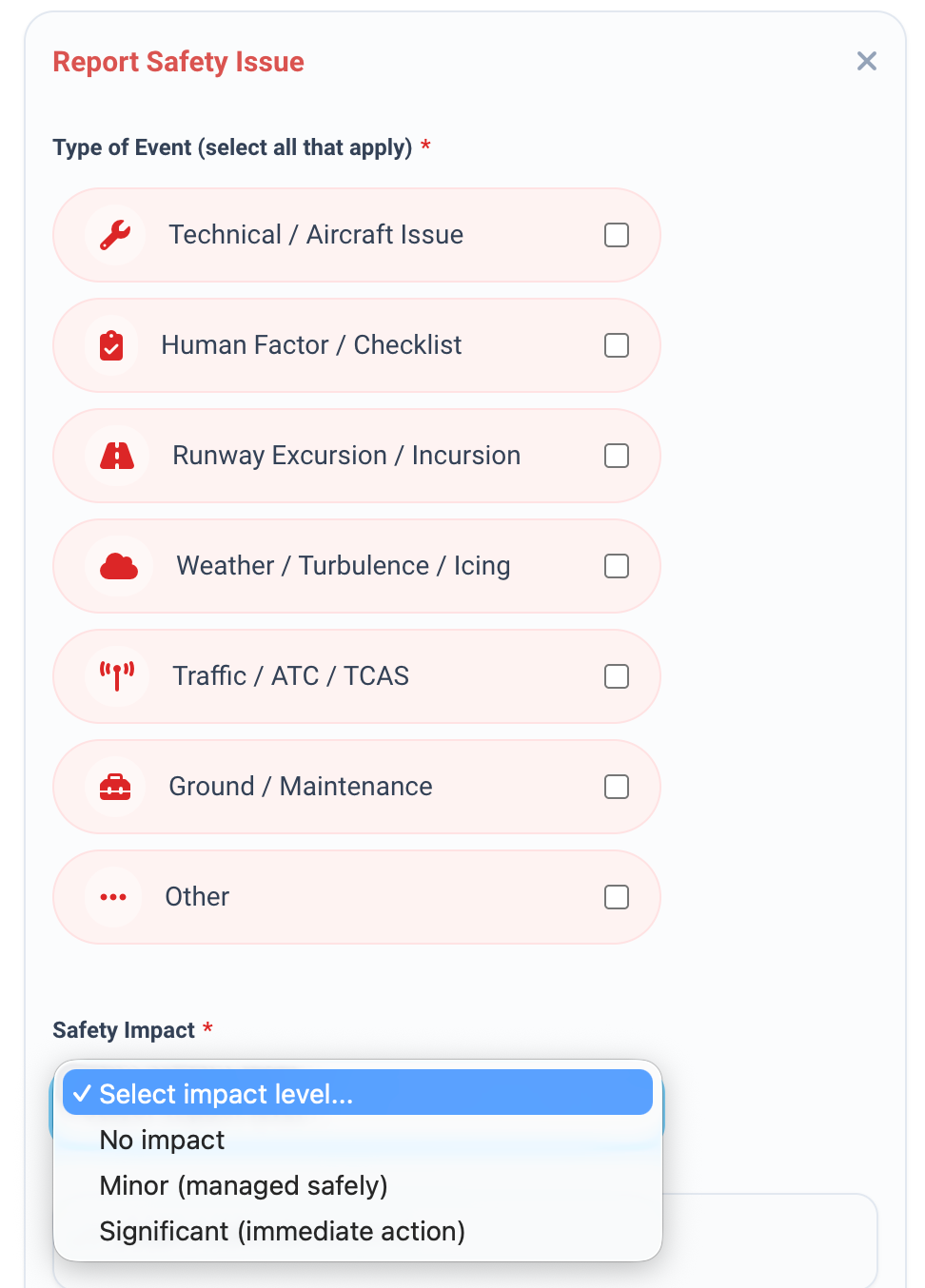Introducing the Post-Flight Safety Report

In business aviation, safety systems often depend on one thing: whether information can flow freely from the cockpit to the people responsible for managing risk. Too often, that flow breaks down.
A stark reminder of this challenge appears in the NTSB’s final report on the 2014 Gulfstream IV accident in Bedford, Massachusetts. The investigation revealed a pattern of procedural drift that the operator had no mechanism to detect, despite at least one contract pilot noticing the behavior earlier.
According to NTSB Finding 3.1.2:
“The flight crew failed to disengage the gust lock system as called for in the Starting Engines checklist and failed to conduct a flight control check as called for in the After Starting Engines checklist, during which the crewmembers would have detected that the gust lock system was engaged.”
This was not an isolated oversight.
Section 1.2.1 of the report notes that a contract pilot, who had flown with the same PIC, observed that he did not use a formal item-by-item checklist.
Yet the company never knew.
As the NTSB states in Finding 2.2:
“No mechanism was in place for the company to detect this routine noncompliance.”
We can’t say whether a structured safety reporting pathway—accessible equally to full-time and contract pilots—would have changed the outcome.
But we can say this:
When an organization lacks a way for pilots to share safety concerns, patterns go undetected. And when contract pilots have no voice, operators lose one of the most valuable perspectives in aviation: fresh eyes.
This is the problem Flying Company set out to solve.
Why Flying Company Built the Post-Flight Safety Report
Today’s flight departments rely heavily on a blend of full-time and contract pilots. Not because the full-timers are lacking—quite the opposite. Contract pilots are increasingly part of a modern, resilient, professionally run operation. They bring with them experience across multiple fleets, exposure to varied SOPs, and the ability to spot issues or inconsistencies that those inside the organization may no longer notice.
But while they may have a front-row seat to how an operation actually runs, they rarely have a structured way to communicate those observations back to the flight department. Many internal safety reporting portals or SMS tools are accessible only to company employees. As a result, some of the most valuable safety feedback—coming from pilots with the broadest perspective—never makes it to the people who need it most.
That’s the gap the Flying Company Post-Flight Safety Report is designed to fill. Our goal was simple: create a way for every pilot on every flight—regardless of their employment status—to participate meaningfully in a flight department’s safety culture.
A Simple, Modern Way for Pilots to Share What They See

The new reporting workflow lives directly inside Flying Company. After each trip, contract pilots can either confirm that everything was “All Clear”—a simple, positive acknowledgment—or submit a safety report that captures what happened, when it happened, and what actions were taken. The interface is clean and mobile-friendly, designed to work just as well during the walk to the FBO as it does later that evening at home.
We focused on making the process intuitive without sacrificing the structure that safety teams expect. Pilots can describe the type of issue, provide context about flight conditions, and include any narrative details that help paint a clear picture. Most reports take well under a minute to complete.
But the most important part isn’t the interface. It’s what happens next.
Creating a True Safety Feedback Loop for Operators


Flying Company Post-Flight Safety Report - Type of Event / Actions Taken
When a flight department becomes a Flying Company Trusted Partner, every post-flight safety report associated with their aircraft is automatically routed to the appropriate flight department safety inbox. There is no additional login for pilots, no new system for operators to monitor, and no risk of valuable information getting lost between systems.
In short, contract pilots gain the ability to participate in an operator’s safety culture, and operators gain visibility into how their crews—full-time or contract—are actually running their flights. It closes the loop that the Bedford report highlighted so clearly: the absence of a mechanism to detect unsafe drift.
This system also reinforces something that often goes overlooked. Contract pilots are not outsiders. They are contributors. When given a voice, they become an additional layer of safety, catching things others might miss and strengthening the overall resilience of a flight department.
“Safety First — Safety Always”
At this year’s NBAA-BACE convention, NBAA President Ed Bolen opened the conference with a simple but powerful message: “Safety First — Safety Always.” For that statement to be true, everyone participating in the operation must be able to contribute to safety—not just the pilots on payroll, not just the pilots with corporate email addresses, not just the pilots flying the most hours.
A safety culture can’t depend on full-time status. It depends on access.
And that’s what this new feature provides.
Become a Trusted Partner
If your flight department or management company wants to ensure that every pilot flying your aircraft can meaningfully participate in your safety program, we invite you to become a Trusted Partner with Flying Company. You’ll receive every post-flight safety report from contract pilots, seamlessly and reliably.
This is how modern flight departments strengthen their SMS. This is how patterns get caught early. This is how professionals fly.
We’d be happy to show you how it works.
Referenced: NTSB AAR1503




